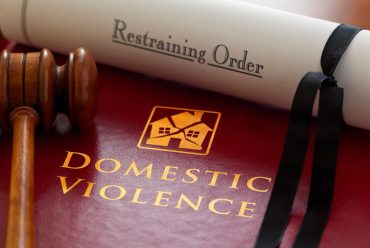What Are Different Kinds Of Child Custody Arrangements in Canada?
One of the challenges of separation and divorce is adjusting to the times when your children stay with the other parent. That is not always the case. Depending on how responsible the other parent is, you can apply for sole or shared custody (one parent has fewer legal and physical responsibilities towards the child).
In Canada, the primary focus is on the best interests of the child, which means your province’s family court will make the final decision. It is your responsibility to submit all necessary documents and proof if you want a particular kind of child custody.
Here are 6 kinds of child custody arrangements in Canada:

1. Joint Custody
In joint custody, both parents share responsibility for their child’s upbringing. They will need to cooperate and take a joint decision regarding the child’s health, education, and welfare. There are two main types of joint custody:
- Joint Legal Custody: Both parents have a say in decisions affecting the child.
- Joint Physical Custody: The child spends a substantial amount of time living with both parents, typically at least 40% of the time with each.
2. Sole Custody
Sole custody means one parent has the exclusive right to make decisions for the child. The child lives primarily with the custodial parent, while the non-custodial parent may have visitation rights.
It is often granted when one parent is deemed unfit or when parents aren’t cooperative with each other. In sole custody arrangements, the non-custodial parent typically retains the right to access information about the child’s health, education, and welfare. Sole custody can be changed into joint or shared custody if the other parent starts becoming responsible.
3. Shared Custody
In shared custody, children spend equal amounts of time with both parents. Both parents have significant, though not necessarily equal, amounts of time with the child.
Shared custody works well when parents live close to each other and are good at co-parenting. It is the best kind of custody because it lets the child stay connected with both parents and grow up surrounded by love.
4. Split Custody
Usually a rare occurrence, in split custody the children are divided between both parents such that each parent has full-time custody of one or two kids. It is preferred when the children are older and express a preference for living with different parents. It isn’t the best for younger kids as it separates siblings.
5. Parallel Parenting
In parallel parenting, each parent independently makes day-to-day decisions during their parenting time. It is designed to minimize direct communication and conflict but all important decisions must be taken together.
6. Bird’s Nest Custody
In bird’s nest custody, the child remains in the family home while the parents take turns living there. It is only possible when both parents can cooperate smoothly and can only be a temporary custody until the other parent finds permanent residence.
What happens when parents can’t agree on custody?
When parents disagree on custody, it falls to the court to decide based on the best interests of the child, a legal standard outlined in Section 24 of Ontario’s Children’s Law Reform Act and reinforced under the Divorce Act for federal cases.
This analysis goes far beyond income or who files first. Judges consider a range of factors:
- Bond between the child and each parent
- Each parent’s ability to provide a consistent daily routine
- Responsibilities parents handled by themselves before separation
- History of abuse, neglect, or exposing the child to conflict
- Child’s opinions (children over 12 years get a say over custody)
The court does not assume joint custody is always ideal. If cooperation is lacking, the court may lean toward sole or parallel parenting. Judges also weigh relocation issues, cultural continuity, and support networks like extended family.
Need help with child custody in Etobicoke? Noori Law is here for you. Contact us today for a consultation.








